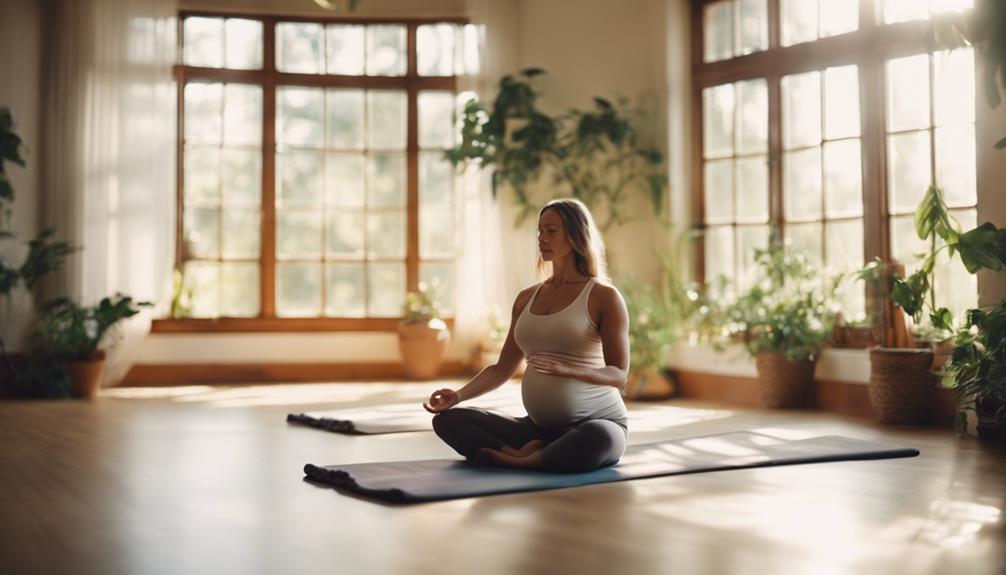Yoga is a holistic practice that integrates the mind, body, and spirit, and meditation plays a crucial role in deepening this experience. In class settings, incorporating yoga meditations can enhance the overall practice, allowing participants to cultivate mindfulness, relaxation, and self-awareness. This article explores the various aspects of integrating meditation into yoga classes, aiming to provide instructors with insights and practical tips for creating a harmonious and enriching environment for their students.
As the popularity of yoga continues to grow, so too does the interest in meditation as a complementary practice. Understanding how to effectively integrate these elements can significantly enhance the experience for participants, making classes more effective and fulfilling. The following sections will delve into the benefits of meditation, various types of meditative practices, preparation techniques, and strategies to create a calming atmosphere conducive to meditation.
Benefits of Incorporating Meditation into Yoga Classes
Incorporating meditation into yoga classes offers numerous benefits for both instructors and students. Enhanced focus and concentration are among the primary advantages; meditation encourages practitioners to center their attention, which can lead to improved performance in both yoga postures and daily activities. Additionally, the combination of yoga and meditation fosters a greater sense of relaxation, allowing students to release tension and stress effectively. This holistic approach to wellness promotes emotional stability and resilience, contributing to overall mental well-being.
Moreover, meditation can deepen the mind-body connection, enabling participants to become more in tune with their physical sensations and emotions. This heightened awareness can lead to a more profound understanding of one’s body and a more intentional approach to practice. Furthermore, integrating meditation encourages a community atmosphere within classes, as students often share their experiences and insights, fostering connection and support among participants.
Understanding Different Types of Yoga Meditations
There are various types of yoga meditations, each offering unique approaches to achieving mindfulness and tranquility. Some popular forms include breath awareness meditation, guided visualization, and mantra meditation. Breath awareness involves focusing attention on the breath, cultivating a sense of presence and grounding. This technique is particularly effective for calming the mind and reducing anxiety, making it an excellent choice for beginners or those new to meditation.
Guided visualization, on the other hand, encourages practitioners to create mental images that evoke peace and relaxation. This method can be particularly engaging and can help participants escape from the stresses of daily life. Mantra meditation involves the repetition of specific phrases or sounds, allowing practitioners to enter a state of deep concentration. Each type of meditation can cater to different preferences and needs, allowing instructors to tailor their classes for maximum benefit.
Preparing Your Class for Effective Meditation Practices
Preparation is key to leading successful meditation sessions within yoga classes. Instructors should first familiarize themselves with the meditation techniques they plan to incorporate, ensuring they feel confident and knowledgeable. Developing a structured plan for the class can help maintain a smooth flow and create an atmosphere conducive to relaxation. Instructors can also consider the time allocated for meditation; even a short five to ten-minute practice can be impactful when integrated thoughtfully into a class.
Additionally, instructors should assess the needs and preferences of their students. Engaging with students beforehand can help identify their experiences with meditation, allowing instructors to customize the session accordingly. Understanding individual goals, such as stress relief or increased mindfulness, can inform how meditation is approached in class, leading to a more personalized and effective experience for participants.
Essential Techniques for Guiding Yoga Meditations
Guiding yoga meditations effectively requires a blend of verbal cues, body language, and presence. Instructors should use clear, calming language to guide participants through the meditation process. Pacing is also crucial; allowing pauses between instructions gives students time to absorb and implement the guidance. Instructors can encourage students to gently close their eyes or lower their gaze, helping to minimize distractions and foster a more inward focus.
In addition to verbal guidance, instructors can utilize their own energy and presence to create a supportive atmosphere. Demonstrating calmness and confidence can help students feel more at ease and open to the meditation experience. It’s essential to remain attentive and responsive to students’ needs, offering gentle adjustments or encouragement when necessary to keep them engaged and focused throughout the session.
Creating a Calm Environment for Meditation Sessions
Creating a tranquil environment is vital for productive meditation sessions. The physical space should be comfortable, inviting, and free from distractions. Consideration should be given to lighting, temperature, and noise levels. Soft lighting or natural light can help establish a serene atmosphere, while the temperature should be comfortable enough for participants to relax fully. If external noise is an issue, using calming background music or ambient sounds can help mask distractions.
In addition to physical elements, the use of props can enhance the meditation experience. Providing cushions, blankets, or yoga mats allows students to find comfortable positions, which is essential for longer meditative sessions. Instructors can also incorporate aromatic elements, such as essential oils or incense, to promote relaxation. A thoughtfully arranged environment supports the meditative process and encourages participants to cultivate a greater sense of peace and mindfulness.
Tips for Engaging Students During Meditation Practices
Engaging students during meditation practices can be challenging, especially in larger classes. One effective approach is to encourage participants to set personal intentions or goals for their meditation. This practice fosters a sense of ownership and investment in the experience, prompting students to reflect on their thoughts and feelings. Instructors can invite students to share their intentions with the group or keep them private, catering to different comfort levels.
Instructors can also utilize interactive techniques, such as asking open-ended questions or encouraging a brief sharing session after the meditation. This can help students process their experiences and establish connections among class members. Additionally, varying meditation techniques throughout the course can maintain interest and engagement, allowing students to discover what resonates most with them.
Common Challenges in Teaching Yoga Meditations
Teaching yoga meditations can present challenges, such as difficulty maintaining students’ attention or managing diverse skill levels within a class. Instructors may encounter students who struggle with stillness or find it hard to quiet their minds. It’s essential for instructors to acknowledge these challenges and offer reassurance, emphasizing that meditation is a practice that takes time and patience to develop.
Another common challenge is addressing the varying levels of experience among students. Instructors should be mindful of the different backgrounds and comfort levels within the class, providing modifications and alternatives for those new to meditation. Offering clear instructions and gentle encouragement can help create a supportive environment, allowing students to explore meditation at their own pace.
Incorporating Mindfulness into Yoga Meditation Classes
Mindfulness is an integral aspect of both yoga and meditation, and incorporating it into classes can greatly enrich the experience. Instructors can emphasize the importance of being present in the moment, guiding students to focus on their breath, bodily sensations, and surrounding environment. This practice encourages participants to cultivate awareness, leading to a deeper understanding of themselves and their reactions to external stimuli.
To foster mindfulness, instructors can integrate practical exercises, such as body scans or mindful movement, into the class. These techniques encourage participants to connect with their bodies and become aware of tension or discomfort. By incorporating mindfulness into meditation practices, instructors can help students develop skills that extend beyond the class, promoting a more mindful approach to daily life.
Enhancing yoga classes with meditation elements can create a more holistic and fulfilling experience for participants. By understanding the benefits of meditation, preparing effectively, and creating a calming environment, instructors can guide students toward greater self-awareness, relaxation, and connection. As yoga continues to evolve, the integration of meditation stands out as a powerful tool for enriching the practice and fostering a sense of community. By embracing these techniques, instructors can inspire their students to explore the depths of their own inner landscapes, ultimately leading to a more meaningful journey within yoga.


